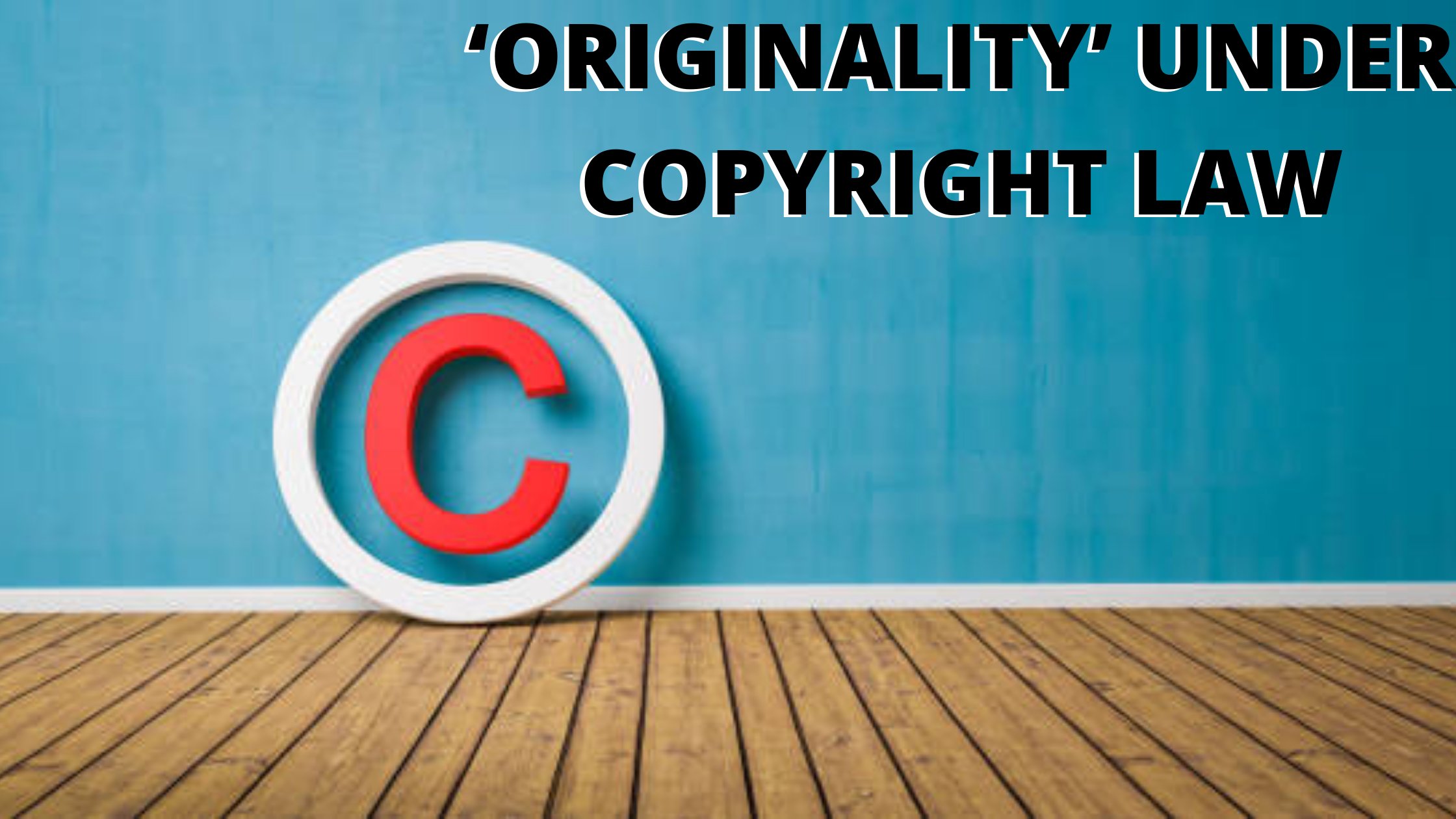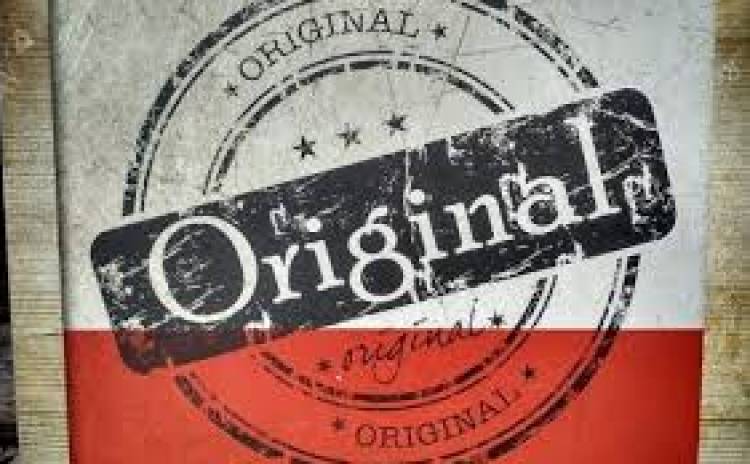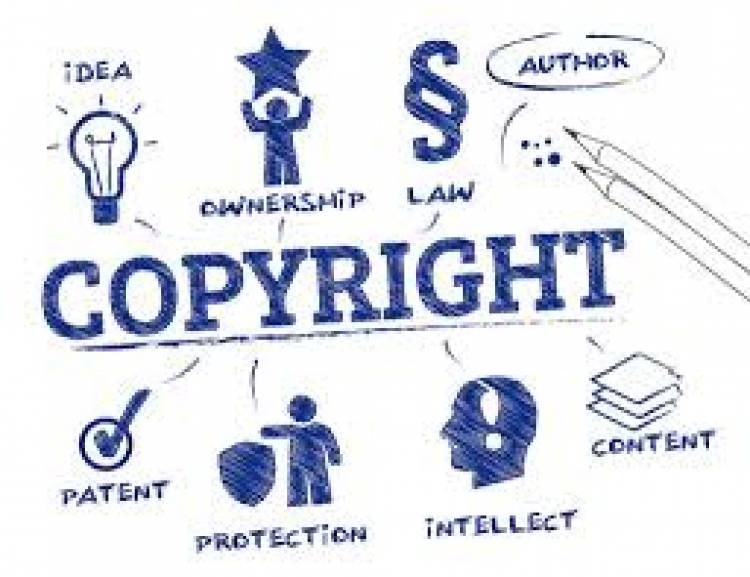‘ORIGINALITY’ UNDER COPYRIGHT LAW
Originality in work works as a “sine qua non” of the copyrighted work. Copyright is the right acquired by a person for a work which is a result of “Intellectual Labour”. A copyright owner is granted an exclusive right of restricting anyone else from copying, reproducing, publishing or selling any of the work created by him for a specific period of time without his permission.

‘ORIGINALITY’ UNDER COPYRIGHT LAW
INTRODUCTION
Intellectual Property Rights having the basic concept of protecting a work that has emerged out of the intellect of a person, needs the work so produced to be solely produced by the inventor and should not be a copy of another work from another person. Originality in work works as a “sine qua non” of the copyrighted work. Copyright is the right acquired by a person for a work which is a result of “Intellectual Labour”. A copyright owner is granted with an exclusive right of restricting anyone else from copying, reproducing, publishing, or selling any of the work created by him for a specific period of time without his permission. Originality is the concept of the copyright regime which indicated that the work which is created or invented is new or novel such that it can be distinguished from another other work so existing.
The concept of Originality has emerged from the First Case law of University of London Press Ltd v. Tutorial Press Ltd., In this case-
a. The dispute was about some mathematical question paper made by the University of London press. The tutorial press worked by collecting question papers from various universities and publishing the question paper in their book (University of London press being one of them).
b. The university claimed that this was a violation of the copyright of the professors working in the university so Tutorial Press should desist from the publication of the question papers. For which the press claimed that the question papers were from the existing body of knowledge. The court held that despite the questions paper already exist in a body of knowledge but the formulation of questions into a question paper requires the indication of effort and skills which qualifies the question paper to be protected under copyright law. It is because of this case Originality is considered as the first and the most important condition for a work to be protected under copyright law.
c. Originality does not mean that the work should be original but it means that some basic efforts should be given in for making work for such work to be deemed original. Protection of copyright in a work is necessary for the purpose of protecting a person's creative expression and to encourage creative expression so as to promote originality in work and get the best out of creativities we have available with us.
ORIGINALITY UNDER COPYRIGHT LAW:
According to Section 1(1)(a) of the Copyright, Design and Patent Act 1998 of United Kingdom Copyrights consists of “originality of literacy, dramatic, artistic work”. Though there is no universal or clear definition of the concept of originality. The description of originality is very subjective depending upon the various laws made in any country. According to Section 13 of the Indian Copyrights Act,1957, copyright is given to the works which show characteristics of:
-
Original literary, dramatic, musical, and artistic work;
-
Cinematographic films, and;
-
Sound recordings.
By the word “Original”, the law does not talk about some work which is an expression of the original or inventive idea. Generally, it is considered as originality does not require novelty of expression. In other words, the law means that the work should originate solely from the author and shouldn’t be subject to be a copy of someone else’s work.
The interpretation of the word “Originality” has various consequences in various laws around the world because the question of what can be considered under originality and what not is totally dependent upon any law made regarding it by different interpretations. It can be said that the degree of creativity expected to make a work original is still a grey area. There is no clear definition of when will the work be considered as original by the law. Since there is no definite concept of originality so courts have to decide on the cases of copyright in violation of originality by various doctrines. The first doctrine used for concluding the cases of originality violation is-
-
DOCTRINE OF SWEAT OF BROW:
According to this, an author acquires the rights through simple diligence during the creation of a work. The author is entitled to such rights on account of efforts and expense put in by him in the creation of such a work. And such creation must be the work of the author himself and must not be copied from another source.
-
DOCTRINE OF MODICUM OF CREATIVITY:
The concept of this doctrine emerged from the case of Feist Publication Inc. v. Rural Telephone Service in the Supreme Court of USA. The court dismissed the doctrine of the sweat of the brow and held that in order to be original a work, the work must not only have been the product of independent creation and must also exhibit a “modicum of creativity”.
In India, the ‘Doctrine of Sweat of Brow’ was followed for a long time. After the judgment of the English courts, the supreme court of India observed that the copyright law does not prevent a person from taking what is useful from an original work with additions, changes, and improvements according to once needs and market demand. The court held original thought and original research are not necessary for claiming copyright, even things such as dictionaries, gazettes, etc. can be categorized under copyright protection.
In the case of Burlington Home Shopping v Rajnish Chibber, the facts were similar to Feist’s case so the court held that a compilation is copyrightable following the same doctrine followed by the English courts.
Bombay High Court in its judgment of a newspaper copyright case held that there is no copyright for happenings and events which are shown in news stories and reporters cannot claim any copyright infringement for such events because they have reported it first and any idea, information, or phenomena created by authors own thinking hard work, etc can’t be protected under copyright law. Hence, there is no copyright protection for news or information per se. it can be concluded that the main objective of copyright is to protect expression while encouraging others to build freely upon the ideas and information conveyed in the expression and not to reward a holder of copyright for his labor. The standard of originality cannot be set on a higher pitch as the majority of the work would fall out of the preview of copyright similarly it can’t be set too low because the degree of protection of work conferred by law might degrade. The laws relating to originality are developing in the right direction in India following the footsteps and taking ideas from the developments of the “modicum of creativity” doctrine of the USA’s law and the “sweat of brow” doctrine of UK law.
CASE STUDY: -
In the case of Eastern Book Company V. D.B. Modak (2007)
In this case, the Supreme Court discontinued the ‘Sweat of the Brow’ doctrine of UK law and shifted to a ‘Modicum of Creativity’ doctrine of the US law. The facts of the case are that the Supreme Court Case reporter (SCC), was aggrieved by other parties violating their copyright according to Section 14 of the Copyright Act by launching software containing the judgments edited and published by SCC along with other additions made by the editors of SCC.
The concept of “flavor of the minimum requirement of creativity” was introduced in this case. It was held that to establish copyright, the creativity standard applied is not that the work must be novel or non-obvious, but some amount of creativity is required in the work to claim a copyright. The Court held that information and facts stated by the editors of SCC can be given copyright protection because such information so produced requires the appropriate skills of legal knowledge, of the editor. Thus, this exercise and creation has a sign of a minimum amount of creativity and enjoy copyright protection. Accordingly, the Court granted copyright protection to the additions and contributions made by the SCC. The Court also held that the orders and judgments of the Courts are in the public interest and everybody has a right to use and publish them so no copyright can be claimed on the same.


BY-
GAURAV GUPTA












